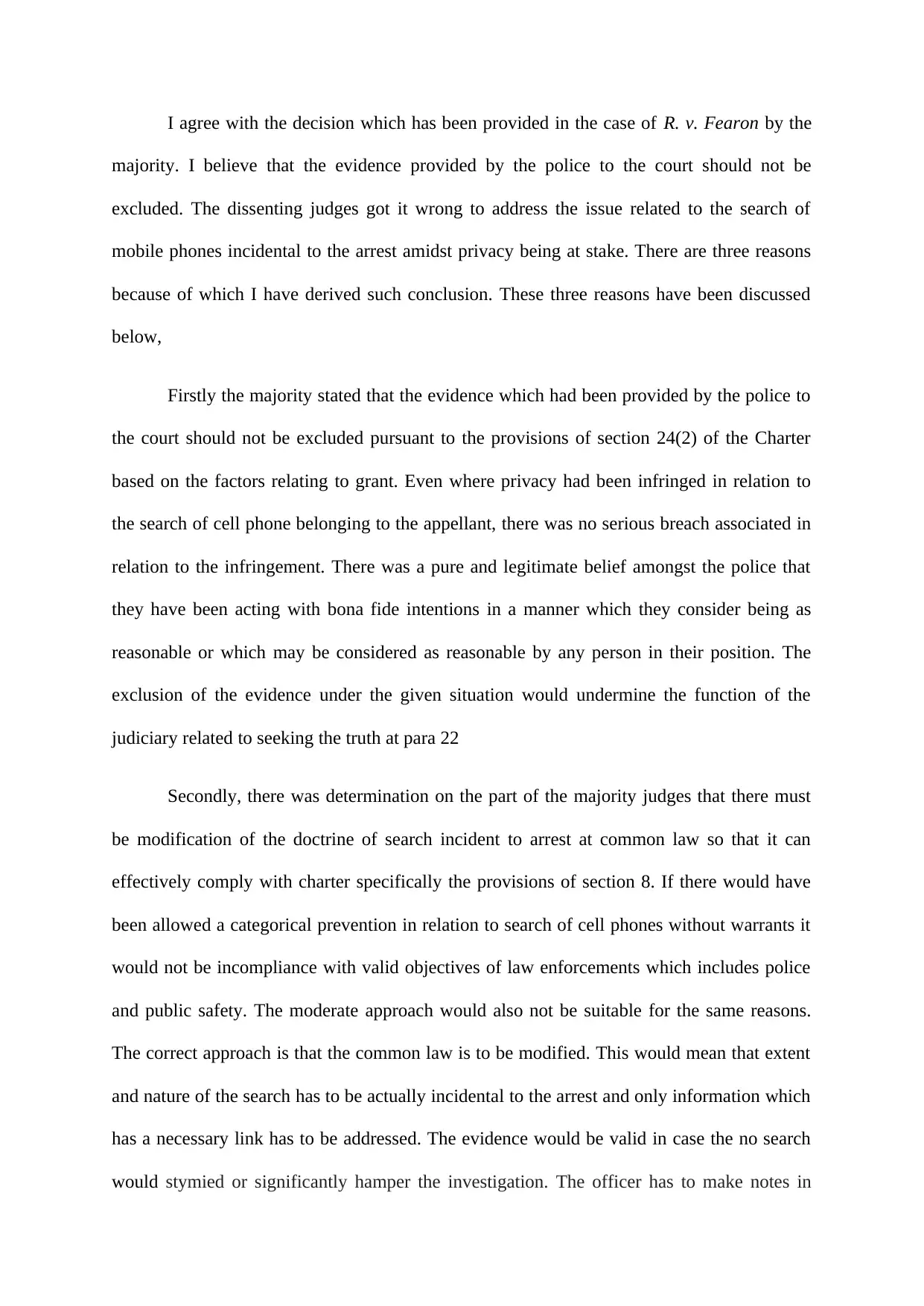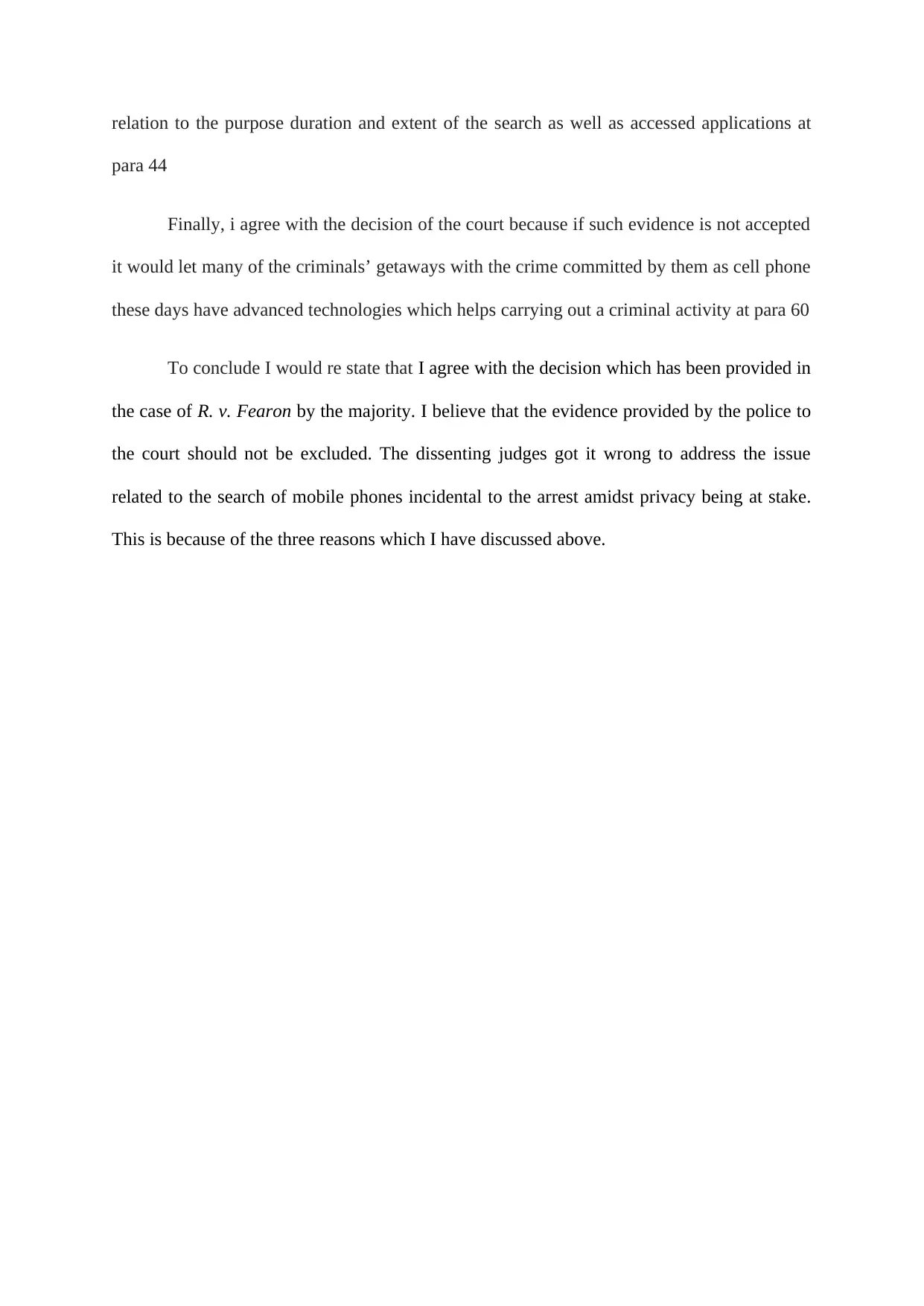Discussing R. v. Fearon: Privacy vs. Law Enforcement in Cell Searches
VerifiedAdded on 2023/06/10
|3
|544
|176
Essay
AI Summary
This essay provides an analysis of the R. v. Fearon case, focusing on the Supreme Court of Canada's decision regarding police authority to search cell phones incident to arrest. The author agrees with the majority decision, arguing that the evidence obtained by the police should not be excluded. The justification is based on three key points: the lack of a serious breach of privacy under Section 24(2) of the Charter, the necessity to modify the common law doctrine of search incident to arrest to comply with Section 8 of the Charter while acknowledging valid law enforcement objectives, and the potential for criminals to evade justice if such evidence is deemed inadmissible. The essay emphasizes the importance of balancing privacy rights with the need for effective law enforcement in the digital age, referencing specific paragraphs from the R. v. Fearon case to support the arguments presented.
1 out of 3





![[object Object]](/_next/static/media/star-bottom.7253800d.svg)